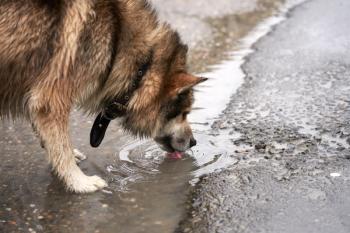
Your skin biopsy result is hypersensitivity disorder part 1 (Proceedings)
A recent multi-center study investigating the causes of hypersensitivity dermatitis (HD) in cats has revealed some interesting findings that are clinically useful.
A recent multi-center study investigating the causes of hypersensitivity dermatitis (HD) in cats has revealed some interesting findings that are clinically useful. The goal of this two part seminar is to discuss the results of this multi-center study and possible clinical implications.
Five Hundred Eight-Eight Pruritic Cats, Nine Countries and Two Continents
In this study, 72 data parameters from 588 cats from Europe and the United States were analyzed.
“Diagnosis? What Diagnosis?”
Data from two groups of cats was not used in analysis because of diagnostic dilemmas. When the data was originally accumulated, 86 of 588 cats were excluded from the data analysis because the diagnosis was unclear or two different diagnoses had been made. Of the 502 cats remaining, 74 cats had a diagnosis narrowed to “non flea hypersensitivity dermatitis” but these cats were not included in the data analysis because a dietary restriction-provocation test was not performed or completed.
Comment: This part of the data highlights common knowledge that the diagnosis is not always easy to make, clear, simple or possible. If owner or cat are unable or unwilling to cooperate with response to treatment trials it may not be possible make a definitive diagnosis.
“No, no! This is not fleas!”
Of the remaining 502 itchy cats, 146 or 29% of pruritic cats were diagnosed with a skin reaction pattern caused by flea hypersensitivity. Male cats were over-represented in this group compared to other groups. The mean age of onset was 4.4 years and all of the major reaction patterns associated with hypersensitivity diseases were seen in this group.
Comments: Flea allergy dermatitis is common cause of pruritus in cats but this is the largest study to confirm and document this clinical observation. In cats with skin disease, owners are often adamant that the skin disease cannot be flea allergy dermatitis. These owners insist that this is not possible because the cat is indoors, it goes outside only on a screened in deck, it goes outside only when supervised, flea control does not help, and “I never see fleas”. This study clearly shows that approximately 30% of cats presented with pruritus have skin disease that responds to flea control. There are many reasons for lack of response to flea control but given that there is a 1 in 3 chance that fleas are the problem, it is very cost effective and practical to “revisit intense flea control”. Miliary dermatitis was a common reaction pattern in this study, as expected. One manifestation of bacterial and yeast overgrowth in cats is miliary dermatitis. If flea control has failed in the past, it might have been because of pruritic concurrent microbial overgrowth. One other consideration is possible concurrent insect bite hypersensitivity.
Bacteria: 21-30 days with any number of antibiotics with a good spectrum of activity in the skin2
Yeast: Itraconazole 5 mg/kg PO on a week on week off treatment protocol for 30 days
(Note: Cats do not tolerate ketoconazole, do not use)
Flea Control: Insect bite hypersensitivity is treated by keeping the cat inside. Evaluate the cat after a reasonable period of flea control (at least 3 treatments- 0, 30 and 60 days minimum)
“Looks like, but is not Hypersensitivity”
The next largest group of study cats (121 of 502 or 24%) presenting with pruritus were diagnosed with other non-hypersensitivity diseases. A total of 31 different diseases were diagnosed (in order of frequency): parasitic, autoimmune, fungal, neoplastic, psychogenic, viral, isolated otitis externa, bacterial, and miscellaneous diseases. Eight of the 121 cats had more than one concurrent “other diseases.”
Comments: From a diagnostic perspective, it is important to explain to clients that after flea allergy dermatitis, the next most likely cause to investigate is something other than allergy. Many of these other diseases are potentially treatable and curable or have treatments different from what would be used to manage an allergic cat. Non-flea related parasitic causes of pruritus were the most common cause of skin disease in this group of cats. Skin scrapings, flea combings, fecal examination, and response to therapy trials (ear mite treatment, lime sulphur) diagnose these diseases. Excluding fleas, the common causes include lice, Cheyletiella, Demodex (especially D. gatoi), other mites (Otodectes, Notoedres) and ticks. Clearly, age and clinical signs need to be considered because immune skin diseases, fungal diseases, and neoplasia were the most next most common diseases. These diseases usually present with clinical signs strongly suggestive of the “OTHER” category but not always. With regard to clinical signs, this group had very pleomorphic clinical signs. However, the authors did comment that symmetrical alopecia, miliary dermatitis, and the eosinophilic granuloma complex were uncommon clinical reaction patterns in this group. The most commonly observed clinical reaction pattern was erosions and ulceration of the face and neck (55% of cats in the Other Group).
The Non-Flea/Non-Food Itchy Cat
After flea HD (29%) and Other (24%), the next largest defined group was the non-flea/non-food hypersensitivity group with 20% (100/502). This diagnosis was made after exclusion of other resembling conditions, a dietary trial and a positive response to type 1 antihistamines, glucocorticoids, or cyclosporine. Seventy-two percent of these cats had clinical signs develop before 3 years of age with only 12% of cats having clinical signs reported to start after 6 years of age. Clinical signs in these cats were widespread with the abdomen and extremities significantly more affected than cats with food allergy. Although all four of the major reaction patterns (miliary dermatitis, erosions/ulcerations, symmetrical alopecia and the eosinophilic granuloma complex) were reported in these cats, symmetrical alopecia and the eosinophilic granuloma complex were more common. Several cats had more than two clinical reaction patterns.
“It's Time to FEED THE CAT!!”
Of the 502 cats reported, 61 or 12% were diagnosed with food hypersensitivity by a positive response to a diet trial. This study was unable to identify markers that helped distinguish this group from the non-flea/non-food hypersensitivity group. There were some helpful trends including the observation that this group of cats had more digestive signs than the other group. Interestingly, although head or face and neck lesions were more common in this group, otitis externa was more frequently associated with the non-flea/non-food hypersensitivity group in this study.
“The Undetermined HD”
Finally, a definitive diagnosis could not be made in 74 of 502 cats (15%).
References and Recommended Readings
Clinical characteristics and causes of pruritus in cats: a multicentre study on feline hypersensitivity associated dermatoses Hobi S, Linek M, Marignac G et al Veterinary Dermatology 2011 DOI: 10.1111/j.1365-3164.2011.00962.x
Hnilica KA, Small Animal Dermatology: A color atlas and therapeutic guide Elsevier Saunders, St. Louis 2011
Newsletter
From exam room tips to practice management insights, get trusted veterinary news delivered straight to your inbox—subscribe to dvm360.




